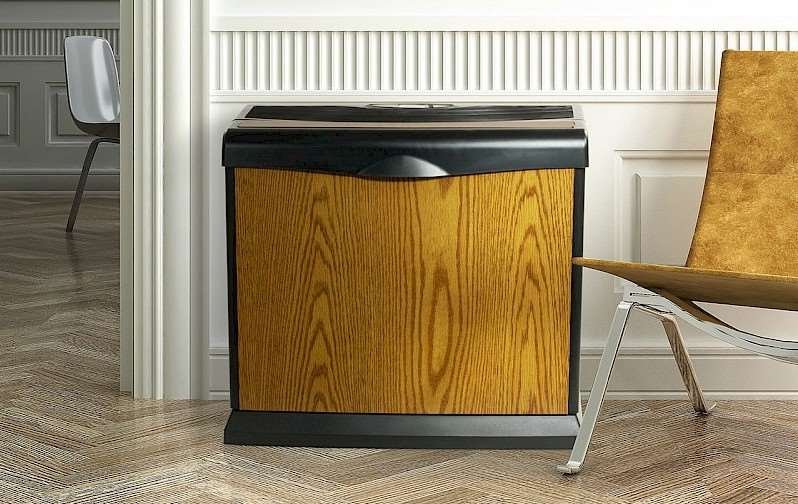The Science of Humidity in the Air
As long promised (Jan. 21, 2022 blog post), here is a guide to an important and usually ignored aspect of healthy indoor air quality—humidity, the moisture in the air.
This is a well-known topic to engineers dealing with indoor air—I gave my first technical presentation on it in 1979!—but usually completely overlooked today.
Humidity is all the more important now because of two related conditions:
- As readers of this blog are aware, increasing the amount of fresh air ventilation is a key strategy for reducing the risk and amount of covid-19 transmission.
- However, this incoming, usually colder fresh air is also often drier than the air already in the building.
Have you ever wondered why it’s called “Relative Humidity”? It’s because the capacity of air to contain moisture is RELATIVE to the temperature of the air. The warmer the air, the more moisture it can hold. When there is dew on the grass in the morning, it’s because the air became cooler overnight, and moisture from the air “fell out” onto the grass.
Here in New England and other cold climates, when a lot of fresh air is brought into the building, as it should be for general health and covid-19 safety, the indoor air will become very dry—much drier than optimum levels.
The science is well-established as to what these levels are—about 40 to 60% Relative Humidity or RH. For example, a 2013 CDC study dealing with the flu virus said: "Maintaining indoor relative humidity greater than 40% will significantly reduce the infectivity of aerosolized virus."
https://www.cdc.gov/niosh/nioshtic-2/20042261.html
Now a new study from MIT has been in the news lately, promoting this “Sweet Spot” after finding that, worldwide, "an indoor relative humidity between 40 and 60 percent is associated with relatively lower rates of Covid-19 infections and deaths”.
https://news.mit.edu/2022/covid-humidity-spread-1116
And, quoting a humidifier manufacturer:
https://aircare.com/blog/fighting-covid-add-mist-to-your-list/
"For centuries, studies have shown a correlation between dry air and respiratory illnesses. Now, recent studies from Yale University, Harvard Medical School, and the National Academy of Sciences all agree that an indoor relative humidity (RH) of 40-60% not only slows the spread of coronavirus, it also helps your immune system fight off [other] respiratory illnesses.”
“In a March 2020 article, Yale researchers stated that dry air makes it easier for airborne viral particles of viruses, such as COVID-19, to travel. This is because airborne droplets containing viruses shrink by evaporation, so they are lighter and float longer. When indoor air is at 40-60% RH, these particles retain moisture, so they are heavier and fall out of the air.”
https://news.yale.edu/2020/03/30/hopes-pandemic-respite-spring-may-depend-upon-what-happens-indoors
But too much moisture in the air is also bad. It has long been known that levels above 60% RH provide an environment conducive to mold growth. Mold can be hidden, as on the back sides of toilet tanks, or even behind wallpaper. Many people have allergies or sensitivities to mold, so it should always be avoided, or removed when discovered.
How to Maintain Optimum Indoor Humidity
In cold climates, achieving the sweet spot humidity means having humidifier equipment add moisture to the air.
The exception is in commercial buildings, and some residences, where they have Energy Recovery Ventilators that capture most of the moisture of the exhaust air and transfer it to the incoming fresh air (without transferring viruses or pollutants).
Another common case in schools and other commercial buildings involves Air Handling Units or Unit Ventilators, where fresh air is heated and brought into the rooms without being humidified. Rooms served by this equipment can be very dry, as low as 10% RH, so these are perfect places for humidification.
We have a recommendation for a make and model of room humidifier, which was selected after testing multiple models, and has now been in use for more than a year: Aircare EA 1407. This is a medium-sized floor model on wheels, and is widely available at less than $200. It has a moisture output that may be enough for most applications, such as a classroom, office, apartment, small house, or part of a larger house. If this unit proves to be not big enough, it’s simple to add another one.
The Aircare unit has a digital humidity gauge, but our experience is that this reads too high because it’s too close to where the moist air is being discharged. To get an accurate reading, use a separate digital humidity gauge such as the ThermoPro TP49 Digital Hygrometer (less than $10).
Aircare EA 1407
Now You Can Search This Blog!
We have added a “search” bar for this blog - scroll all the way down
to the very bottom of a blog page to find the search bar.
We invite you to subscribe to our Newsletter -
the cost is free and each new post comes to your email
every two weeks on Thursdays!
To subscribe, simply email safetulator@kohlerandlewis.com
with your name and email address and we will sign you up.
Highlights From Past Blogs
October 28 - Testing, Testing, Testing
October 14 - Breathe Fresh Air - Be Smarter
September 2 - A Mask That Really Works
August 5 - Breaking News - Almost Zero Risk
April 29 - The Big Meter
April 7 - How to Test
March 21 - The Origin of the CDC’s Biggest Mistake
February 16 - Ventilation Revolution
January 11 - Air Purifiers
December 15 - The Double Risk of Indoor Dining

